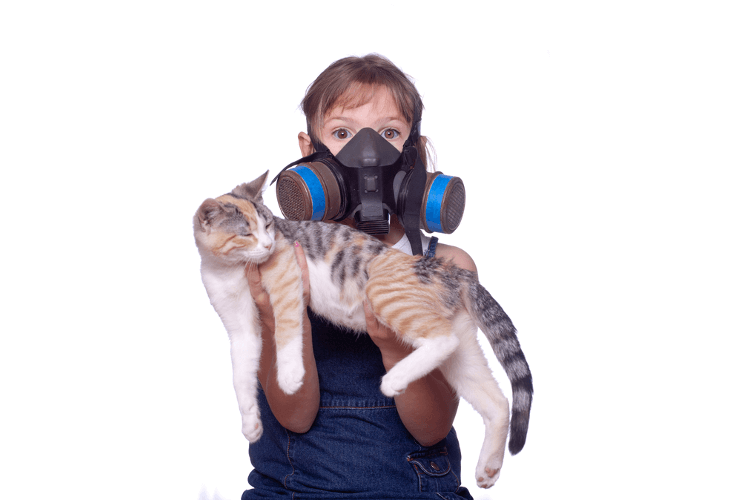As many as 10% of Americans suffer from some form of pet allergy and cat allergies are the leading offender. Symptoms of exposure to cats can range from runny nose and watery eyes to itching, rash, and difficulty breathing, and these can vary from the mild to the severe.
Here’s the funny thing, coming from a crazy cat lady like me: I’m allergic to cats. Yep. I have three of them. I know. I also have stock in a certain antihistamine brand. I’ve made the choice to cope with my cat allergies rather than live a dark, dark life without cats. So for me, having a cat allergy isn’t a deal-breaker (much to the chagrin of my doctor). Let’s take a look at the causes of cat allergies and check out a few simple ways I’ve learned to minimize their negative effects.
What Causes Cat Allergies?
Cat allergy symptoms are triggered by proteins that occur naturally in the saliva and skin glands of cats. These proteins become airborne via fur and dander when a cat grooms or sheds (and grooming and shedding are a cat’s full time job). My body’s immune defenses see these proteins as attackers that irritate my skin and the membranes in my nasal passages, eyes, throats, and lungs (my poor lungs!).
Now, before YOU conclude that your allergic symptoms are due to your cat, you may want to get tested by an allergist, as similar symptoms can be produced by other triggers—from food to fabrics and cleansers. An allergy test can precisely identify the allergen causing your reaction. If you’re lucky, it may not be your pet at all. But if you do find that your kitty is the cause of your symptoms, there are a few simple steps you can take to help manage your body’s allergic reactions.
What Can You Do?
Control Your Exposure
One way to do this is to make the room of your choice (most choose the bedroom) an allergy-free zone. Blocking your cat’s access to the bedroom means your pet won’t be grooming or shedding on your bedding. Some people even prefer to use bed covers, linens, and pillowcases made from impermeable materials. This is what I’ve chosen to do, and it helps tremendously. My bedroom is a cat free zone. Which is good, because there some bed activities (ahem) I don’t want my cats seeing.
Use An Air Filter
Since the proteins that trigger allergies are airborne through pet dander, you can benefit from a high-efficiency particulate air (or HEPA) filter in all rooms of your home. This will remove the vast majority of dander from the air before it settles on furniture, drapes, or bedding. Avoid fabrics that attract dust (I stick to blinds instead of curtains, also known as “cat hair velcro”), and vacuum or dust your most lived-in areas frequently.
Bathe Your Cat Regularly
I know. Bathing cats sucks, but it does wash away the dead skin cells that produce dander. Remember to use only those shampoos that are approved for pets—special shampoos are available for the more delicate physiology of kittens. If you’re unsure whether a pet shampoo is safe for your animal, check with your veterinarian. As an added bonus, here’s my trick to make bathing cats a bit easier: don’t use running water. Fill the tub or sink with about six inches of lukewarm water, and just gently set the cat in the water. Then use a cup to pour water over the cat (avoid the ears!) and it will freak your cat out way less than leaving the tap running.
Ask Your Doctor For Additional Treatments
There are many ways to treat allergies. These include allergy shots, steroid and antihistamine nose sprays (the one I love best just went over-the-counter and can be found at any drugstore), and antihistamine pills. You should explain to your allergist that you are dedicated to your pets and that you plan to keep them, but simply wish to better manage your allergies. Be prepared for an argument; they have to advise you to get rid of your cats.
I hope these tips help you. They’ve definitely helped me, and I have a three cat household. Plus a dog. And yes, I’m allergic to the dog too. Sigh.







this is a very helpful web site!